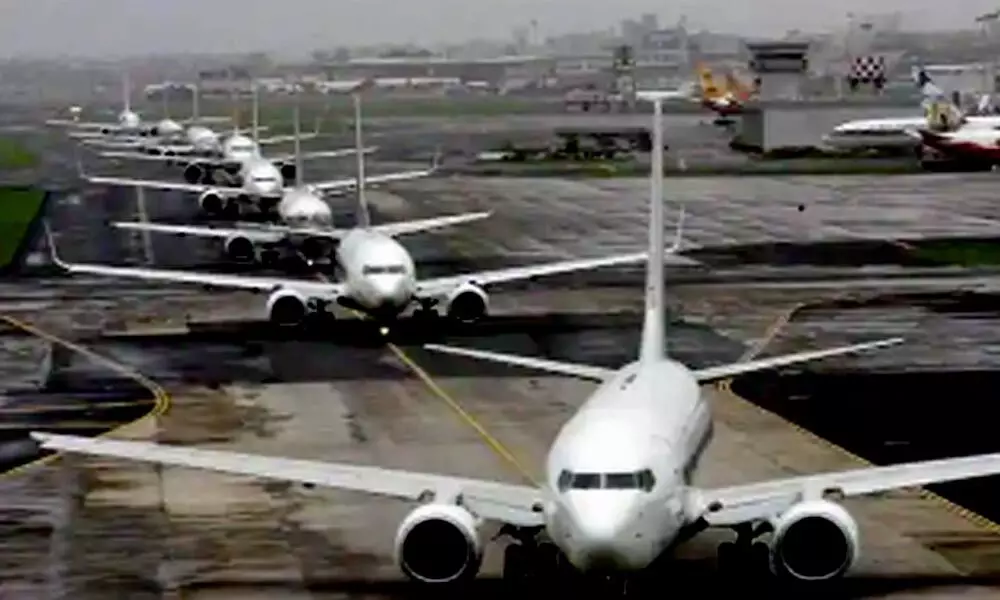Sluggish global airport traffic may pick up in 2022
The Middle East is forecast to remain the most impacted region in 2021, losing 69.3% of its passenger traffic; North America will continue to outperform other regions in 2022
image for illustrative purpose

The lasting adverse impact of the Covid-19 crisis is forecast to remove an additional 5.2 billion passengers by year-end 2021 compared to the projected baseline (the pre-Covid-19 forecast for 2021), representing a loss of 53.2 per cent of global passenger traffic. The Covid-19 outbreak reduced the number of passengers at the world's airports by an additional 5.9 billion in 2020.
Global passenger traffic in 2021 is expected to reach only half of what it was in 2019, with traffic for 2021 totalling only 4.6 billion of the 9.2 billion passengers served two years ago.
The Middle East is forecast to remain the most impacted region in 2021, losing 69.3 per cent of its passenger traffic for the year compared to the projected baseline. This is due to the region's high dependence on international travel and connectivity, both of which are recovering much more slowly than domestic travel.
Driven by the combination of a fast-recovering US domestic market and a high overall vaccination rate, North America's performance has improved significantly in 2021 following a weak first quarter. As a result, the region is forecast to outperform other regions to end the year with its traffic down 36.6 per cent compared to the projected baseline (or down 32.8 per cent compared to the 2019 level). This adjusted total represents a 6.9 per cent increase compared to our March 2021 forecast.
Following an early beginning of recovery, Asia-Pacific experienced a slower than expected first quarter in 2021 due to restrictions imposed around the Chinese new year festivity, in order to limit the spread of the virus. In addition, domestic traffic in the region experienced a sharp decline in the third quarter after travel restrictions were reinstated in some countries. The region is expected to end the year with an estimated traffic loss of 55.9 per cent compared to the projected baseline, a loss 10 per cent greater than projected in July.
International passenger traffic remained weak in the first half of 2021, and signs pointing toward a surge in air travel demand for the second half of the year did not materialize despite an increasing number of people getting vaccinated. International passenger traffic volume is expected to lag significantly behind domestic traffic recovery in 2021 and is forecast to total only 1.47 billion passengers for the year, or 38.7 per cent of the 2019 level.
Domestic passenger traffic is recovering faster than international traffic. Major domestic markets began recovering in 2020 and the pace of recovery accelerated in 2021- especially in the US, by far the world's largest domestic market. Globally, domestic traffic will continue to increase in 2021 to reach more than 3.1 billion passengers by the end of the year, a level corresponding to 58.5 per cent of that achieved in 2019.
2022 projections
In 2022, the Covid-19 crisis is expected to remove more than 3.6 billion passengers during the year compared to the projected baseline, representing a 35.5 per cent decline in global passenger traffic. Compared to the 2019 level, this would represent a 28.3 per cent decrease.
The Middle East will remain the most impacted region in 2022 due to its dependence on international and transit passengers. Traffic in the Middle East in 2022 is expected to be 51.2 per cent lower than that projected for the baseline.
North America will continue to outperform other regions in 2022, reaching more than 85 per cent of its 2019 level by year-end. Passenger traffic in the region for 2022 is forecast to be 21.4 per cent lower than that projected for the baseline. Asia-Pacific passenger traffic in 2022 is expected to be 41.5 per cent lower than that of the projected baseline. Although Asia-Pacific was the first region affected by the pandemic, it embarked on recovery earlier and faster than any other region, mainly because of a quick recovery in China's sizable domestic market. However, the region's traffic momentum was weakened in the second half of 2021 by the resurgence of the pandemic - resulting in Asia-Pacific achieving only the fourth-best performance of all regions. Because of the sheer size of Asia-Pacific's market, the region is expected to record the highest traffic loss among all regions in 2022, seeing 1.59 billion fewer passengers than the projected baseline number.
Domestic passenger traffic volume was helped by the early recovery of major domestic markets such as those of China and Russia. Despite some setbacks in China, global domestic traffic volume will continue to recover faster than international passenger traffic. However, it will total only 4.2 billion passengers in 2022, or 78.5 per cent of 2019 volume.
International passenger traffic will remain weaker than domestic passenger traffic in 2022 but some improvements are expected. International passenger volume is forecast to be slightly more than 2.3 billion passengers for the year, corresponding to 62.2 per cent of 2019 volume.

